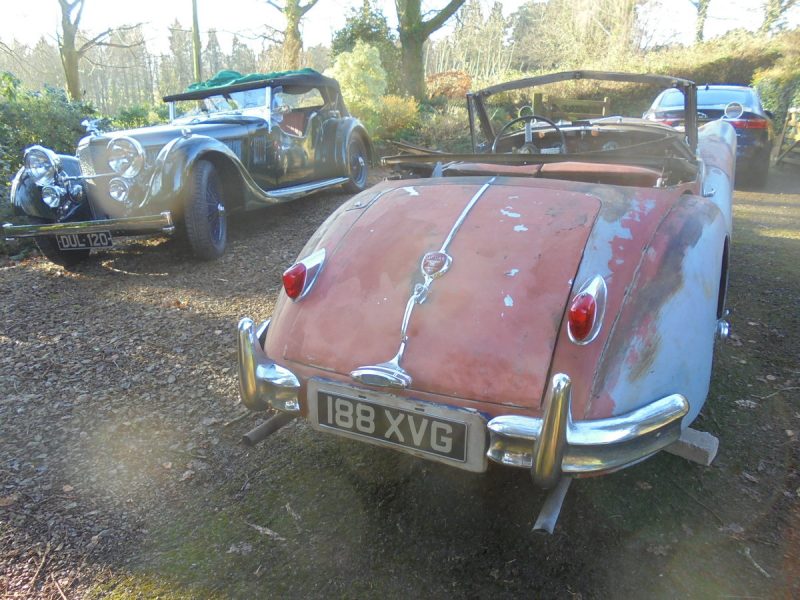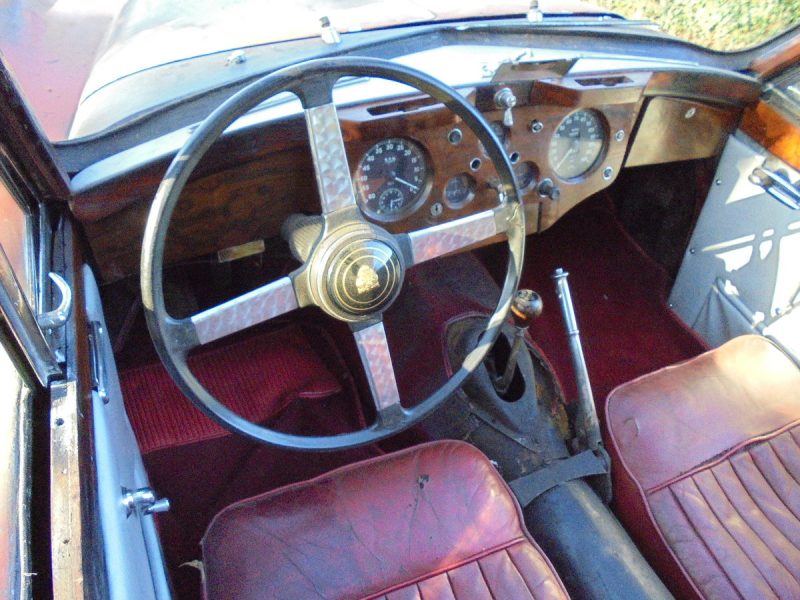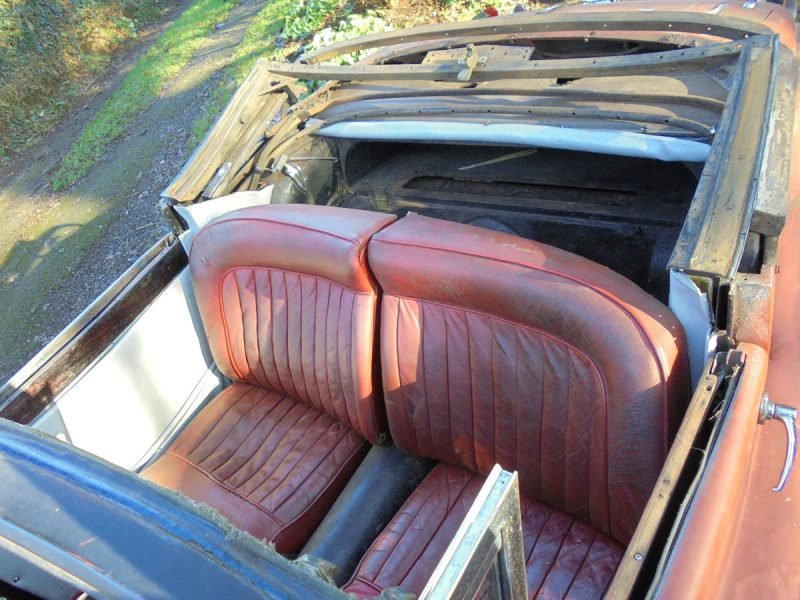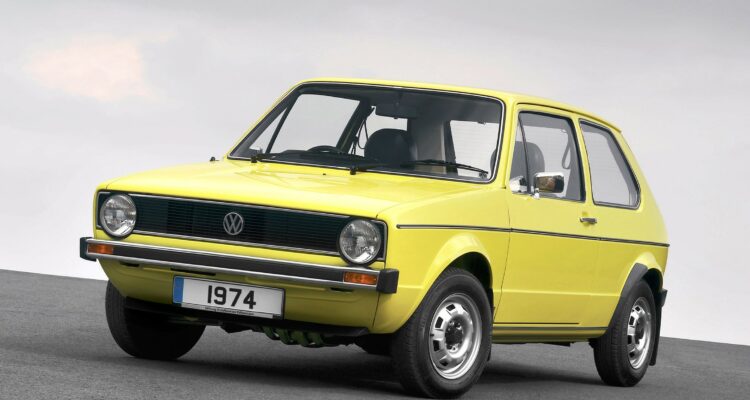1957 Jaguar XK140 – Project Profile
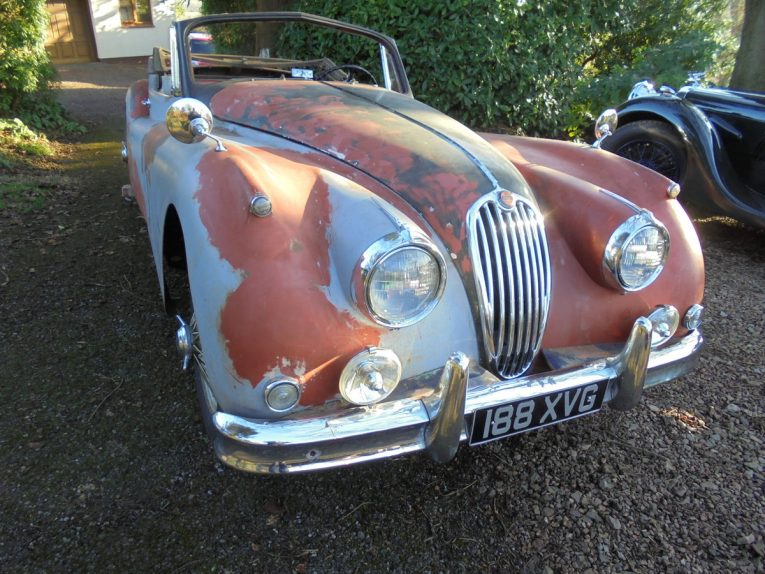
When it comes to building an open-top two-seater sports car, few were ever better at it than the British in the 1960s. And that’s not a gratuitous use of patriotism, we’re not being biased here. Britain just made some belting roadsters. We had the MGs, Triumphs, the Healeys and of course, the Jaguars. The most captivating and handsome of which being the XK series. With an impossibly long nose, a short cabin and a squat rear, these wonderfully proportioned machines were the the car to be seen in during their heyday. Though to be honest, they’re still a car many of us strive to be seen in today, and rightly so. They are magnificent.
The XK was an important car for Jaguar. The first model, namely the XK120, was the first sports car offered by the company since the SS 100, which ceased production in 1939. With Jaguar once again finding momentum after the Second World War, it knew it needed another sports car. Designed by Jaguar’s chief engineer, William Heynes, the XK moved away from the dated open wheel design of the SS, and instead enclosed the wheels under huge, flowing ‘pontoon’ style wings. It was powered by the legendary 3.4 inline-six, ensuring it was as fast as it looked and thanks to that combination of power and style, it was a hit from the off. In fact, it was so cool, Clark Gable had one. Nice.
What is it?
What we’re looking at here is a second-generation XK140. The 120 had been hugely successful for Jaguar, both on the road and on the track. It was the car the brand needed in order to ensure post-war success. However, it wasn’t without its faults. The suspension left some drivers lacking, the steering was a tad wooly and the cabin was tricky for the taller driver to negotiate. Jaguar put all this right with the XK140.
Launched in 1954, the XK140 was longer, which made for more interior space. The steering was upgraded to more direct rack and pinion. The suspension went from lever arm to telescopic dampers and the travel was increased. Significant changes, but changes that improved the car without detracting from the charm of the original 120.
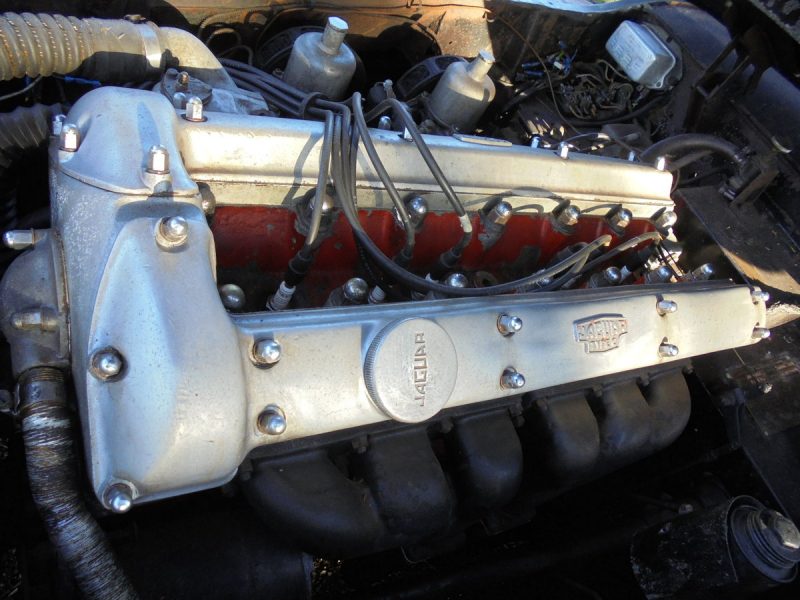
The engine remained the same in terms of the base unit, however it was modified to deliver ten more horses, taking it up to 190bhp in total. A rocket ship for 1955. Though, the Type C cylinder head with sand-cast H8 carburettors would deliver 210bhp. Sadly though, that doesn’t seem to be the case here.
This particular car has been imported from America, which is a great thing as it means the car is potentially solid – the burnt paintwork would suggest it’s come from a dry state. It’s fitted with the favoured close-ratio ‘box, it’s largely complete and the vendor even has the heritage certificate from Jaguar that denotes the car’s original specification – black with red trim.
Why is it a project?
The vendor states that he imported it from America, but sadly he’s just never got around to starting it. As such, he has made the decision to move the old car on to someone who hopefully does have the time and resources to take it on.
The XK140 does look to be complete, which is deeply important on a car like this. Parts are readily available through the likes of Jaguar Heritage, but they won’t be cheap. Having them all on hand will be hugely beneficial. Another benefit is the fact the engine turns by hand, meaning it’s not locked up. Though, it’s still going to need significant attention, as the vendor states the car was last in regular use way back in ‘78.
It strikes us as being an honest, complete and highly desirable classic Jaguar that has fallen into a period of unwelcome neglect. The current vendor has done the hard work for you in as much as he has imported it and had the car registered with the DVLA. As projects go, this is a perfect starting point. A car that has lived its life on British soil would be suffering from all manner of corrosion, something this old Jaguar seems to have sidestepped thanks to its time in America. Dare we say it, it doesn’t look like it’s a million man hours away from seeing the road again.
Five things to look for:
1) Trim
From what we can see in the pictures, the interior trim looks to be in remarkably good condition, though elements like the door cards are mismatched. However, it all looks like it can be saved. Though of course, closer inspection is advised. While new stuff is available, it would be nice to retain some of the car’s patina.
2) Engine
The vendor states the engine turns over by hand, but has not actually run for, quite literally, decades. It would be wise to check the condition of it to know what you’re in for. Is there still coolant, and if so, is it coolant or is it corrosive water? How does the manifold and carbs look?
3) Chassis
The XK140 looks solid, but only a fool would buy it without checking the chassis. We’re quietly confident, but check it anyway. It could have corroded, it could have been subjected to substandard repairs decades ago, you just don’t know.
4) Brightwork
Again, the chromework all seems to be in place, but what condition is it in? If it’s pitted and worn, it’s going to be expensive to repair or replace. A bit of patination is okay, but you really want it to be shiny at the very least otherwise it’ll let the whole car down.
5) Paperwork
We say this every time with an imported car, but do check the documentation. The vendor strikes us as being the sort of chap to do things properly, but that doesn’t mean mistakes won’t have been made elsewhere in the pipeline. The last thing you want to do is restore a car only to find out there is a glitch in the paperwork. Check the chassis, engine and document numbers line up.
What should you do with it?
As the vendor has the heritage certificate, the best way to go would of course be original. This old machine, painted in deep, shiny black and with contrasting red leather innards will make for a vision of motoring perfection. However, before you get the paint gun out, how about doing a full mechanical restoration and then driving it ‘as is’ for a while? It will turn heads when restored, certainly, but there’s something (for us at least) quite exciting about the idea of driving it around with the body as is, wearing its years of patina with pride.

